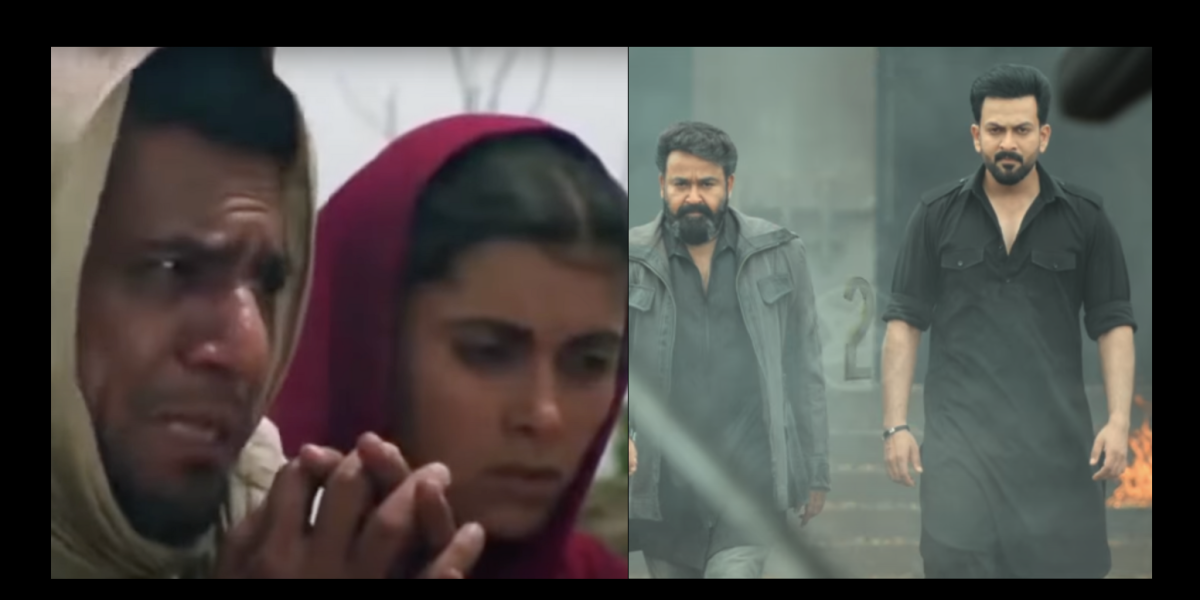In 1988, Tamas arrived on Indian television like a storm breaking an eerie stillness.
Directed by Govind Nihalani and based on Bhisham Sahni’s haunting novel, Tamas dared to hold a mirror to the nation’s soul. Not just to remind us of the agony that the Partition caused us, but to expose the political machinery that breeds communal hatred – systematically, with precision, with horrifying ease.
As a young adult, when I sat before the small screen, I remember how I flinched, not once, but many times, throughout. The movie – then in the form of a mini-series – made me numb. It was so intense. Scene after scene took me far into the dark days, much before my time – beyond its frames.
Tamas wasn’t a cinematic spectacle. It was truth stripped to the bone. I can see them even today, clear and dark. A pig carcass thrown into a place of worship. A whisper becoming a riot. Neighbours morphing into enemies overnight. Women killing themselves to avoid dishonour at the hands of rioters.
This was four years before the demolition of the Babri Masjid. The movie did not predict it. Nor did it predict the Gujarat pogroms; rather, it laid bare the anatomy of such events long before they happened. Each of the series started with this warning : “Those who forget their history are condemned to repeat it.”
It was as if the future was being acted out on film, but no one was listening. We simply looked away.
Today, Empuraan, a cinematic spectacle, has the country watching and debating it. It is a hard-hitting movie that drags truth and trauma to the surface. It revisits India’s recent history of hate and division, conspiracies and treachery, and blurs the distinction between fiction and unsettling facts. However, unlike Tamas, which grieved, warned, and peeled the layers of hatred, Empuraan trembles with the thrill of revenge. It blows into the fire not to extinguish it but to fan it, challenge it and eventually burn and bury the symbols of hate in retribution, gory and violent.
The distinction matters.
Because the fire that is burning is not one that can be doused by fire.
Over the past years, dominant Hindutva voices have publicly advocated for a Hindu Rashtra. Boycotts and harassment of minorities happen in broad daylight. Hate speeches that incite violence have gone unchallenged. The bulldozer, once a symbol of development, is now a mascot of retribution.
Attacks by self-styled vigilantes rise daily, while hate speeches against minorities have become so common that the media barely notices them anymore.
But what of us? The ordinary citizens? The neighbours, coworkers, and relatives?
What about the people at the dinner table, quietly consuming WhatsApp propaganda? What of the colleagues who once believed in secularism but now laugh at the abuse of the other? What about the polite silence from friends and relatives that accompanies every slogan, slur, and destroyed home?
What of the urban educated, who rationalise lynchings but rage over “vote bank politics”?
What of our complicity?
Too many of us – educated, articulate, even progressive, once – have fallen into the trap of propaganda. Our quiet is no longer innocuous. It is consent. It is a collaboration.
And perhaps the most unsettling issue that Tamas wanted us to see all along was not just the horror of violence or the hysteria of mobs, nor was it only about the silent concurrence of the government, but about us: the ordinary people who turned away.
Tamas encountered legal and political challenges in the late 1980s. The government attempted to prevent the series from airing. Petitions were filed. Courts were approached. The administration dreaded the consequences. There was fear it would provoke unrest.
It didn’t.
There were no riots, only discomfort. It provoked something far more powerful: conscience.
That was a different India. One that still flinched.
Do we still flinch?
When we see mobs lynching in broad daylight – do we flinch? When classmates assault a schoolchild on religious grounds at the command of a teacher, do we flinch? When hate becomes humour and cruelty becomes normal content, do we still flinch?
Or have we all actually become one, as in the title of the movie Tamas, which in Sanskrit would mean darkness, ignorance, delusion, or inertia. Tamas is a state of being – one where truth is obscured, and actions are guided by fear, hatred, or confusion.
If Empuraan disturbed us, it should.
Not just for the conspiracies it hints at or the wounds it reopened, but for who we are: a culture that justifies and forgets.
It is now the time to watch Tamas again. Not for nostalgia. Not even for mourning.
But to turn the mirror inward.
Because hate is not yelled. It is whispered. It is nodded at. It is forwarded. It is lived quietly in homes like ours.
And in the end, the most dangerous place for a country to arrive at…
..is when it no longer flinches.
Sridhar Radhakrishnan is an environmental and social justice activist. He writes on democracy, ecology, agriculture, and civil society movements.
Courtesy: The Wire

